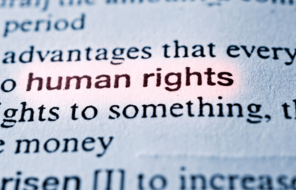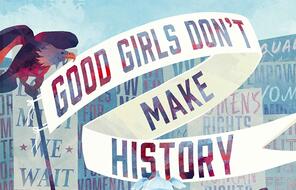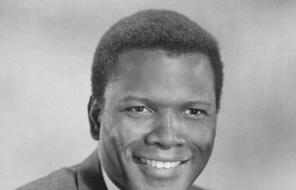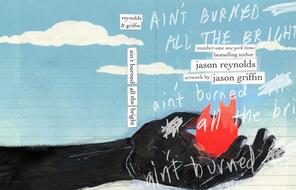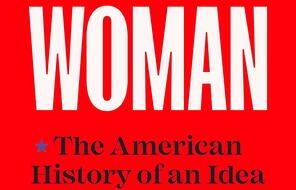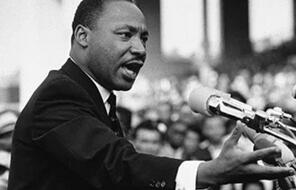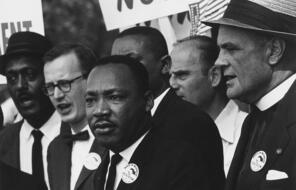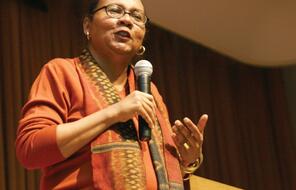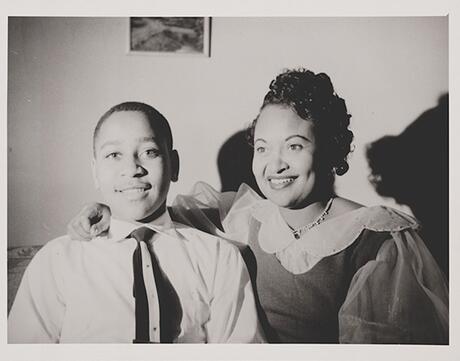
Bringing Proximity and Perspective to the Emmett Till Story
Over the last few years, Facing History & Ourselves has teamed up with partners to create new teaching resources about the legacy of Emmett TIll’s murder and how the actions of Mamie Till-Mobley in the wake of his death helped to spark a movement that reverberates to this day. For this project we collaborated with the Emmett Till & Mamie Till-Mobley Institute, connected to the Emmett Till Interpretive Center in Sumner, Mississippi, and The Alluvial Collective in Mississippi. The Chan Zuckerberg Initiative funded the partnership.
In March of 2023, Facing History published the culmination of this ambitious project: a six-lesson unit called “I Wanted the Whole World to See”: The Murder of Emmett Till.
As part of this work, Chris Benson, Associate Professor of Journalism at Northwestern University, brought his scholarship and long-standing relationships with members of the TIll family to Facing History to assist in developing educational resources about the life and murder of Emmett Till. Chris has been a friend of Facing History for many years, sharing his academic knowledge and new research. In 2020 he also became a member of Facing History’s Board of Scholars.
In 2003, Professor Benson and his co-author Mamie Till-Mobiley, Emmet Till’s mother, published the book Death of Innocence: The Story of the Hate Crime That Changed America. Soon after Chris connected with Facing History’s Chicago office and started presenting at our annual Summer Institutes for Chicago Public School Teachers.
His most recent book, co-authored with Reverend Wheeler Parker, Jr., Emmett Till’s cousin, is titled A Few Days Full of Trouble: Revelations on the Journey to Justice for My Cousin and Best Friend, Emmett Till.
Following the debut of Facing History’s “I Wanted the Whole World to See” Unit, Chris was kind enough to sit down for a conversation about how these new resources came together and what he hopes this curriculum will offer teachers and their students.
------
Facing History: What motivated you to embark on this project with Facing History?
Professor Chris Benson: I'm so proud of my association with Facing History. It's why immediately, when I started talking about the possibility of creating this unit with our other partners, I wanted your team involved. One of the reasons we were committed to developing this, in partnership with Facing History, is your reputation: you help people understand that we all have points of connection. You encourage empathy and community building.
Working with Facing History is also an opportunity to reach a broader audience—that means more classrooms can learn these lessons of history and civics.
Facing History: Something that's unique about this curriculum is how you engaged students in the process of creating it. Can you talk about why student collaboration was included? Why did you want to get young people as advisors on this curriculum, and how did you approach it?
Chris Benson: Yes, that was a great experience, and it was empowering for the students to learn everything they could about Emmett Till before they delved into the actual experience with the curriculum. They were able to give us feedback, not only with respect to how they reacted to the story itself and what it meant to them, but they helped us to find points of connection and develop those points.
Our student partners were also able to share what it meant to engage across racial lines. We brought a group of Mississippi high school students together, both Black and white, who had conversations they might not have had otherwise to help inform the progression of this project. Adults like me could sit in our ivory tower and develop what we think is a perfect curriculum, but this was an opportunity to work with actual students as collaborators, and not as a focus group, but as co-creators.
These students want to really get into this material. They want to interact with each other. They recognize that they're going to be working together, living together to some extent, and they want to understand one another. And they're really open to these experiences—that was so gratifying to see.
Facing History: “I Wanted the Whole World to See”: The Murder of Emmett Till is composed of six lessons and there is a throughline of civic participation. Can you talk about why civic participation is such a focus?
Chris Benson: We know that adolescents need to find their own role as members of our democracy. Democracy can only be successful if we all choose to participate. This unit offers an excellent opportunity to find universal themes around how we are all connected and to participation and preservation of our democracy.
The Emmett Till story is ultimately about power, and once you connect to that dynamic through his story, you’ll see it in other experiences. This curriculum prompts kids to raise questions about things that happen in their lives and in the world in an analytical way. When students learn this history they may make connections to Trayvon Martin, George Floyd, Brianna Taylor, and other such cases.
When you unpack the story of Emmett Till—and we've endeavored to do this with the curriculum—it’s more than just learning about the compelling history of Emmett Till. We can't stop at just recognizing it as white supremacy. What happened to Emmett Till is an example of the exercise of power with respect to control over the Black body. It's also a point of entry to realize the need for the public to join in the democratic process.
Facing History: That's a good lead into the next question. How do you think this curriculum on Emmett Till is different or potentially more impactful than previous lessons or curriculum on Till and the legacy of his murder?
Chris Benson: We have, for one thing, the know-how of Facing History in translating all of these concepts into a coherent six-section unit. That expertise from Facing History was invaluable in helping to create meaningful content.
But then we also have the authentic voice with the 20 years of experience that I've had in not just developing the two books on Emmett Till, but also being a public lecturer and university teacher. I was able to draw on my background to open these lessons up to multiple audiences and relate the bigger meanings within—the meaning with respect to media, with respect to racialized communities, and with respect to what we need to move forward and preserve our democratic system. It's quite lofty, but I think that's really the power of it.
There are a lot of people who have tried to interpret Till’s history, but it has been so mischaracterized over time. There's a problem with it not being taught in every school, and then when it is taught, it's taught in such a limited fashion that people don't really get the full context and lessons. We've brought the most authentic elements of the core story together.
Ultimately, I think that the unique vision we bring is perspective.
Facing History: What challenges do you anticipate educators might have teaching this curriculum?
Chris Benson: It's sensitive material, no question about it. And there is certainly a need to set out some guidelines to help students deal with the painful reactions that we must expect. The interesting thing about the contemporary moment is that young people are used to seeing a lot of representations of violence, and so to an extent, this is probably the best time to introduce this curriculum, so that can attach some comprehension of that violence. I do think teachers need to really take a deep dive into the material before introducing it to students so that they are fully aware of not only the core story, but other considerations around racism and power.
Facing History: Why do you think it's important to teach this history now?
Chris Benson: We’re seeing a particular dynamic right now with groups trying to erase portions of our history in ways that my colleagues on this unit felt are threatening to our deeper knowledge. As we stand here now, we're going to have to understand what unites us. This story offers the opportunity and platform to have nuanced discussions about identity, power, and civic participation, and we thought it was important to share that with students. It's up to us to show that there's nothing threatening about learning history. That, in fact, there is a great benefit in coming to recognize our commonality.
I've said this before in public lectures: the Emmett Till story is not just an African American story, it’s an American story. You can't understand where we are, you can't understand where we're going, and you can't understand what we are unless you look at what happened in this country in the latter half of the 20th century.
That means appreciating the scope of the civil rights movement. Emmett Till is at the beginning of that movement.
These are all connected pieces of a whole that show us that we're all in this together.
Facing History: How do you hope that this curriculum inspires a new generation of upstanders?
Chris Benson: I think that this curriculum will help students find points of commonality. We all have a stake in the world, and the next generation is going to have a big hand in creating what the world looks like. When something happens to one person, it's just a matter of time before it happens to others.
You know, Martin Niemöller famously wrote the poem that ends with the line “Then they came for me—and there was no one left to speak for me.” We have to recognize that this is not just about one identifiable group. It's about us all, and to the extent that identifiable groups can be targeted, it's just a matter of time before before each of us is affected by that, either because we are directly targeted, or because we're diminished by the inability to interact with other people whose vision of the world can inform our own. Multiple perspectives enrich our democratic process and we're all better off because of it.
Header image credit: Emmett Till and his mother, Mamie Till Bradley, ca. 1950. Photograph. NAACP Records, Prints and Photographs Division, Library of Congress (024.00.00). Gift of the Mamie Till Mobley family

